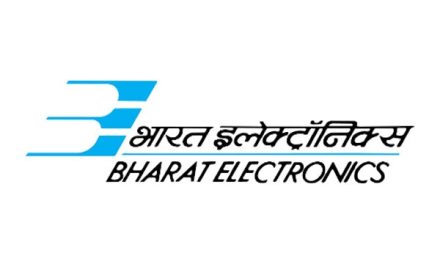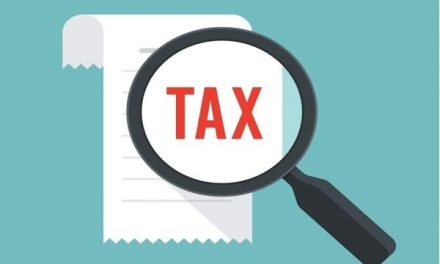The Public Provident Fund (PPF) is one of the most popular savings options in India. One of the reasons for this is the tax benefit it offers – it comes under the EEE (exempt-exempt-exempt) tax status. What this means is that at the time of investment, the interest earned, and proceeds received at maturity are all tax-exempt or free. Now, this is a fact that a lot of us know about. But there are a few things about the PPF account that not many people are aware of.
Here are some lesser-known facts about the PPF account that can help you make a more informed investment decision:
1. Extension of PPF account upon maturity
Once your PPF account matures at the end of 15 years, you have the option to either close it and withdraw the entire amount, or extend the account with or without fresh deposits. The PPF account can be extended in blocks of 5 years, and there’s no limit on the number of times this can be done.
In case you wish to extend without any fresh deposit/contribution, you don’t need to inform the branch as no intimation within 1 year of maturity is automatically considered as an extension (without contribution) upon maturity. However, remember that you won’t be able to make any fresh deposits thereafter, and the PPF account’s balance would keep earning the applicable interest rate.
To extend the account along with fresh deposits, you need to intimate the concerned post office/bank branch. Remember to do so before the expiry of one year from the maturity of the account.
2. Partial withdrawal facility
PPF offers some degree of liquidity through the facility of partial withdrawals, for cases such as financial crisis or exigency. Withdrawal is allowed from the 7th year and the cap on the maximum amount that can be withdrawn is the lower of these two – 50% of the balance available at the end of the 4th year immediately preceding year of withdrawal, or 50% of the balance at the end of immediately preceding year. Partial withdrawals are allowed only once in a year.
As PPF comes under the EEE (exempt, exempt, exempt) category for taxation, any withdrawal made before the lock-in period ends is exempted from tax. However, such withdrawal needs to be declared while filing income tax returns.
3. Premature closure
PPF accounts come with a lock-in period of 15 years, but premature withdrawal is allowed, subject to certain rules and conditions. Premature withdrawal shall only be allowed only after the PPF account has completed 5 financial years. Moreover, the reason behind such withdrawal must either be for treatment of life-threatening diseases, serious ailments of the account holder, spouse, parents or dependent children, or for funding higher education of account holder (also if a minor). Supporting documents from the concerned medical authority (in case of medical emergency) or the fee bills confirming the admission in a recognized institute in India or abroad (for higher education) would be required to be presented to close the PPF account.
However, as a penalty levied on premature closure of PPF account, the account holder gets 1% less interest rate than the applicable rate time to time, from the date of opening the account till the date of premature closure.
4. Loan against PPF account
An account holder is eligible to take a loan against the Public Provident Fund account from the 3rd financial year onwards. The loan amount is capped at a maximum of 25% of the balance amount at the end of the second year immediately preceding the year in which loan is applied. However, note that since you become eligible to make partial withdrawals from the 7th year, you won’t be able to avail the facility of loan thereon.
For instance, you applied for a loan against PPF during the financial year 2018-19, you would be eligible for a maximum loan amounting to 25% of the balance in your PPF account as on March 31, 2017. The balance considered would be inclusive of interest credited to your account till March 31, 2017.
5. PPF account transfer
A PPF account can be opened at any designated post office or bank’s branch. However, one can transfer one’s PPF account for various reasons such as relocating to another city (job transfer) or to avail better services in case you aren’t satisfied with the current PPF account provider.
Firstly, you need to visit your existing bank/post office and submit a PPF transfer request. In case you have a PPF account with a post office, a form named SB 10(B) has to be compulsorily filled to initiate the transfer request. Upon receiving your request, the provider will initiate the discontinuation process and provide you with the original documents which would be required by the new PPF account provider. Such documents can even be directly sent to the requested bank/ post office’s branch.
After filling the required forms, the account provider gives a closure document which is vital to transfer and open the account with the new bank/post office. For a bank to bank transfers, a savings account has to be opened with the new bank (in case you don’t have any existing relation with that bank), while requesting the opening of a PPF account.
Existing customers of the bank would be required to fill a fresh PPF account opening form, nomination form and hand over the original PPF passbook of their existing bank. Banks may even require your KYC documents’ submission. It’s important to note that post the completion of your PPF account’s transfer, your new account would carry a new PPF number, but will be considered as a continuing account and not a fresh account.
6. Contributions
As per the rules, a minimum contribution of Rs 500 per year and a maximum of Rs 1.5 lakh per annum is allowed. The limit of Rs 1.5 lakh is applicable to all accounts either held under his/her own name or on behalf of a minor. You either make lump sum or monthly contributions, but it cannot exceed 12 in a financial year.
7. Interest calculations
It is recommended that one must invest in PPF before the fifth of every month in case of monthly contributions (in case of cheque, ensure that the payment to PPF is received). This is because the balance taken for calculation of interest is taken as the minimum between the fifth day of the month and end of the month.
In case lump sum investment annual investments, it is advisable to do it before April 5 of every financial year. This is because even though the interest is credited on March 31 of every financial year, it is calculated on a monthly basis using the minimum balance at the above-mentioned date.
Any contribution made above the maximum ceiling limit is not eligible to earn any interest. For the October-December quarter 2017-18, the government has fixed the interest rate of 7.8 per cent per annum.
8. Eligibility
We know that only a resident individual can open a PPF account, however, one must remember that joint ownership is not allowed. However, a minor is eligible to open a PPF account with a guardian. A guardian has to be only the father or the mother (not both) or a court-appointed guardian.
A grandfather or grandmother cannot open PPF account on behalf of their grandchild except in cases where both the parents have died. A person cannot open more than one account in his/her own name. However, an account opened on behalf of a minor is treated as separate.
Non-resident individuals (NRI), Hindu Undivided Families (HUF) or body of individuals (BoI) cannot invest in PPF.
Earlier, the government had notified that the day an individual becomes an NRI, the PPF account will be closed. However, office memorandum of finance ministry dated 23 February 2018 has put the said notification in abeyance or temporarily dismissed.
9. Taxation on withdrawals
Since PPF comes under the EEE status, any withdrawals made before the expiry of lock-in period is exempted from tax. However, you are required to declare that you have withdrawn from PPF while filing your income tax returns.
10. Discontinued accounts
11. Nomination
Nomination facility is available. A person can nominate a minor in his/her account. However, no nomination is allowed in respect of an account opened on behalf of the minor.






